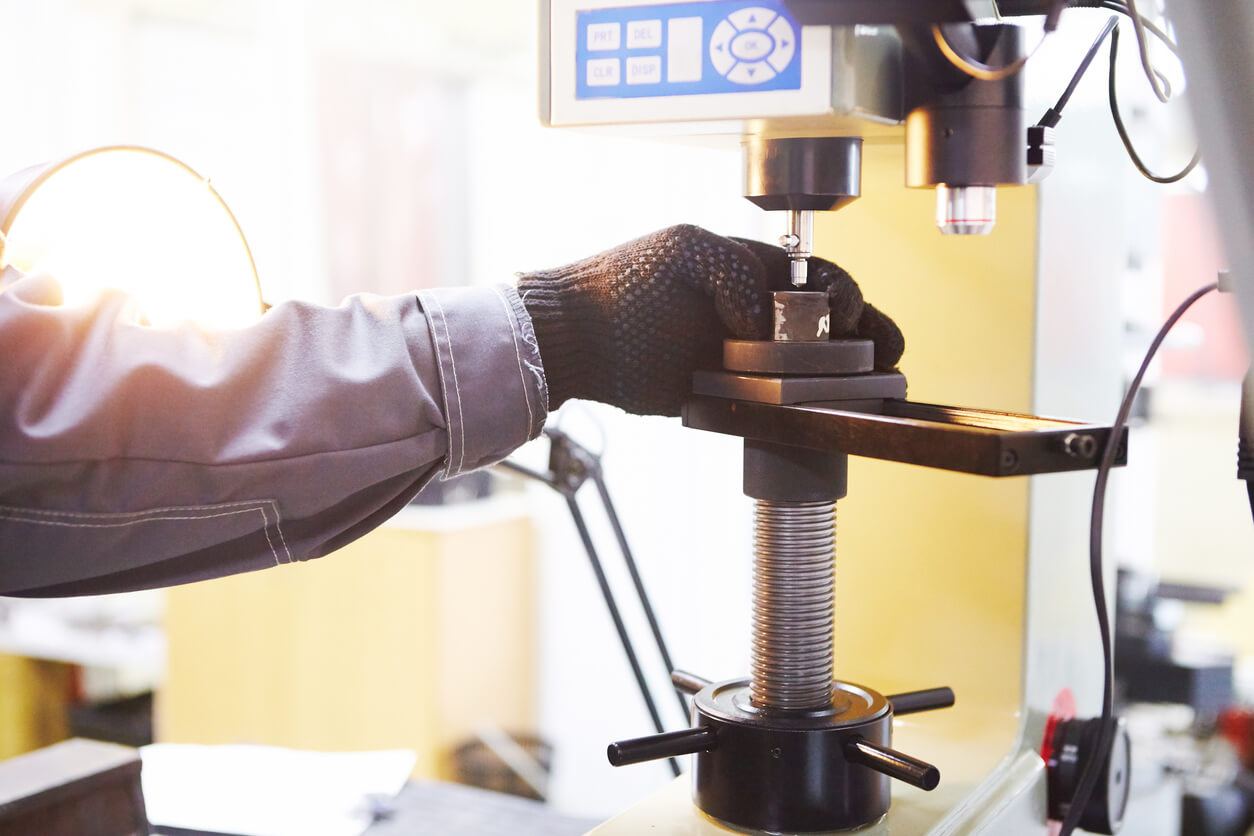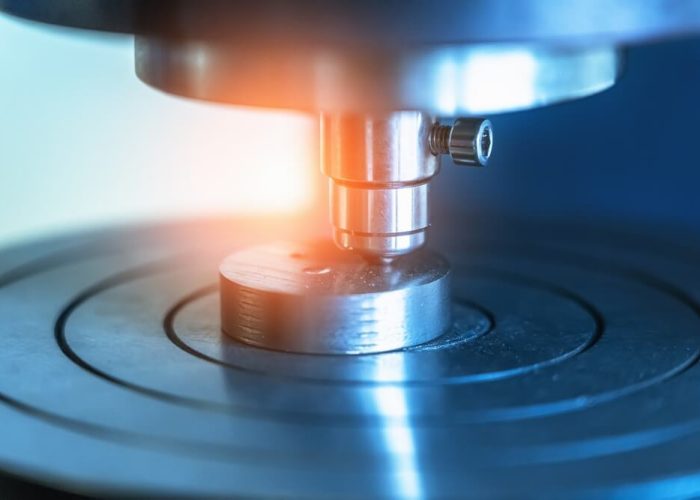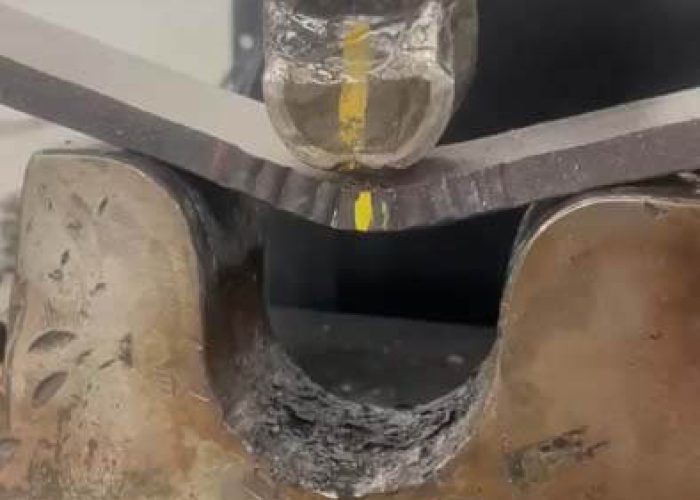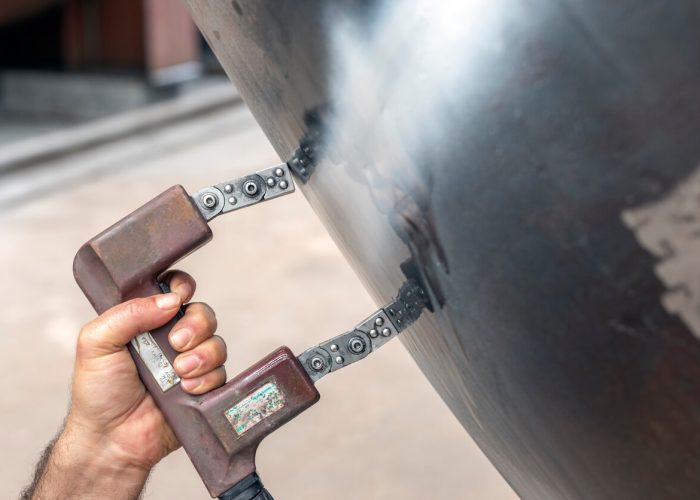Impact Charpy and Izod Testing by WH Labs
In our material testing laboratory, we’ve observed that impact resilience often reveals critical failure points conventional tensile tests miss. We’re continuously analyzing how sudden force application affects various materials under different conditions. The distinction between Charpy and Izod testing methodologies isn’t merely procedural—it’s fundamental to understanding a material’s behavior in real-world applications. Why does a seemingly robust component fail catastrophically in the field? The answer lies in impact mechanics.

Key Points on Izod Testing and Impact Charpy Testing
- WH Labs conducts both Charpy and Izod impact tests to measure material toughness under dynamic loading conditions.
- Monthly calibration with NIST-traceable specimens ensures accuracy within industry standards like ASTM E23 and ISO 9001.
- Tests evaluate materials’ ductile-to-brittle transition temperatures, critical for aerospace, automotive, and construction applications.
- Izod tests use vertically-mounted specimens with 5-25J energy, while Charpy tests use horizontal specimens with 150-300J impact energy.
- WH Labs implements weekly anvil inspections and quarterly alignment checks to maintain testing precision within 5-8% variance.
The Science Behind Impact Resilience Testing
While standardized mechanical testing methods like tensile and compression tests provide valuable data under static loading conditions, impact testing reveals material behavior under dynamic loads. These rapid loading scenarios expose a material’s ability to absorb energy before fracture, a vital property we call impact resilience.
In our lab, we analyze this resilience through the pendulum-based Charpy and Izod tests. When the swinging hammer strikes a notched specimen, we measure the energy absorbed during fracture. This quantifies a material’s toughness under sudden stress.
The science hinges on understanding strain rates, notch sensitivity, and temperature effects. A material that performs admirably under slow deformation might fail catastrophically under impact. We’ve found this distinction essential for components subjected to sudden loading or operating in environments where impact resistance determines service life. Similar to tensile testing, these impact tests help prevent catastrophic failures in critical components across aerospace, automotive, and construction applications.
Key Differences Between Charpy and Izod Methodologies
How do Charpy and Izod tests differ when measuring impact resistance? While both evaluate a material’s ability to absorb energy during fracture, they employ distinct specimen orientations and impact configurations.
Understanding impact resistance requires distinguishing between Charpy and Izod tests, which fundamentally differ in specimen orientation and impact methodology.
In Charpy testing, we position specimens horizontally with both ends supported, striking them at the center opposite the notch. This creates a three-point bending scenario.
Conversely, Izod testing requires vertical specimen mounting with one end clamped, while impact occurs at the free end near the notch—generating cantilever bending.
Charpy tests typically use larger specimens (10×10×55mm) compared to Izod’s smaller dimensions.
Additionally, hammer energies differ: Charpy commonly employs 150-300J hammers while Izod utilizes 5-25J ranges.
These methodological variations markedly influence results, making it essential to specify which test you’re employing when reporting impact resistance values.
Like ASME BPVC standards for pressure vessels, these impact tests establish crucial safety benchmarks for materials used in critical applications.
Industry Applications and Material Selection Criteria
Because manufacturers must ascertain product reliability under varying stress conditions, impact testing has become indispensable across multiple industries.
We’ve observed aerospace applications requiring Charpy testing for critical components exposed to extreme temperatures, while automotive manufacturers typically rely on Izod tests for polymer-based parts.
When selecting materials, we recommend considering these industry-specific criteria:
- Aerospace: High notch toughness at subzero temperatures
- Automotive: Consistent energy absorption during collision
- Construction: Weather and temperature cycling resistance
- Medical: Biocompatibility with predictable failure modes
We’ve found that materials with high impact resistance aren’t always preferable for every application. Instead, we prioritize materials that demonstrate appropriate impact profiles for specific use cases, ensuring you’re implementing components that will perform reliably within your industry’s unique operational parameters.
Complementary nondestructive testing methods can be integrated with impact testing to provide comprehensive material evaluation without compromising structural integrity.
Interpreting Test Results: What the Numbers Really Mean
Having identified industry-specific material selection criteria, we must now address the challenge of understanding raw test data.
Impact energy values (measured in joules or foot-pounds) aren’t merely numbers; they represent a material’s ability to absorb energy before fracture.
We look beyond the absolute value to the fracture characteristics. A high energy value with ductile fracture indicates toughness, while a similar value with brittle features suggests potential field failures.
The ductile-to-brittle transition temperature (DBTT) often matters more than individual readings.
When interpreting results, we consider:
- Test temperature relative to service conditions
- Notch orientation to material grain structure
- Statistical distribution across sample sets
- Energy absorption curve shape
For comprehensive analysis, our laboratory employs mass spectrometry techniques to identify trace elements that may influence fracture behavior.
How Temperature Affects Impact Resistance Performance
Temperature emerges as perhaps the most critical environmental variable influencing impact resistance, with dramatic effects observable across relatively narrow thermal ranges. Materials typically exhibit a ductile-to-brittle transition temperature (DBTT) zone where impact energy absorption decreases precipitously.
The narrow thermal window between ductile performance and catastrophic brittleness represents the critical vulnerability in material selection.
We’ve consistently observed that polymers and metals display different temperature sensitivity profiles. For example, many steels maintain excellent toughness at room temperature but become dangerously brittle below -20°C.
Plastics often show graduated transitions, with some engineering polymers maintaining acceptable impact resistance down to -40°C while others fail at just 0°C.
When we conduct temperature-modified Charpy and Izod tests, we’re providing essential data for applications where thermal cycling or extreme environments are expected. Understanding these DBTT curves helps our clients select materials that won’t catastrophically fail when temperature conditions fluctuate. Similar to our approach, Drop Weight Tear Testing provides critical insights into fracture toughness under varying temperature conditions to ensure material safety in industrial applications.
WH Labs Testing Equipment and Quality Assurance Protocols
At WH Labs, we’ve implemented rigorous equipment calibration procedures that exceed ASTM E23 standards to guarantee reliable impact test results. Our Charpy and Izod testing machines undergo daily verification using certified reference materials.
Additionally, we perform monthly extensive calibration checks using traceable instrumentation. We maintain detailed quality control standards through statistical process control charts, measurement system analysis, and participation in interlaboratory proficiency testing programs to validate our testing protocols. Our adherence to strict ISO 9001 certification requirements ensures the accuracy and reliability of all mechanical testing we conduct.
Equipment Calibration Procedures
Why would properly calibrated equipment be essential to impact testing? Accurate results depend entirely on precision-calibrated machines, as even minor deviations can lead to catastrophic material failures in real-world applications. At WH Labs, we’ve developed rigorous calibration protocols that exceed ASTM E23 and ISO 148 standards.
Our calibration process focuses on three critical components:
- Pendulum verification – We conduct monthly energy absorption checks using certified reference specimens traceable to NIST standards
- Anvil and striker geometry – We perform weekly dimensional inspections using precision gauges to detect wear patterns
- Machine alignment – We verify specimen positioning systems quarterly with digital measurement tools accurate to ±0.01mm
We understand your need for defensible test results that protect your reputation and ensure product safety.
Quality Control Standards
While equipment calibration forms the foundation of reliable impact testing, our extensive quality control standards at WH Labs establish the framework for consistent, reproducible results. We’ve developed a thorough QC system that includes regular verification testing, statistical process control, and detailed documentation protocols.
| QC Element | Frequency | Critical Parameters |
|————|———–|———————|
| Reference Samples | Weekly | Energy absorption ±2% |
| Blind Testing | Monthly | Technician precision <5% |
| Round Robin Tests | Quarterly | Inter-laboratory variance <8% |
Our quality control program meets ISO 17025 requirements and exceeds ASTM E23 recommendations. We’re committed to maintaining these standards through continuous training and performance monitoring. When you partner with us, you’re joining a community dedicated to the highest levels of testing integrity and reliability in impact testing services.
Frequently Asked Questions
How Much Do Charpy and Izod Testing Services Typically Cost?
We typically charge between $50-200 for Charpy and Izod testing services, with pricing varying based on specimen quantity, material types, and whether you’re conducting standard or specialized evaluations.
What Is the Average Turnaround Time for Impact Testing Results?
We typically deliver impact testing results within 3-5 business days. For our valued clients requiring expedited service, we offer 24-48 hour turnaround options at a premium rate.
Can Samples Be Tested if They Don’t Meet Standard Dimensions?
Yes, we can test non-standard dimensions, but we’ll need to note these variations in our report as they may affect results compared to standardized specimen geometries.
Are Digital Impact Test Reports Available for Certification Purposes?
Yes, we provide digital impact test reports for certification purposes. Our fully compliant documentation includes all relevant test parameters and results, accessible through our secure client portal for your regulatory requirements.
Does WH Labs Offer On-Site Testing for Large Components?
Yes, we do offer on-site testing capabilities for large components. Our mobile equipment allows us to perform impact evaluations directly at your facility, eliminating transportation constraints for oversized specimens.
Takeaway
We’ve examined the thorough science of impact testing through Charpy and Izod methodologies, highlighting their distinct applications across industries. Testing variables, particularly temperature conditions, greatly influence material performance outcomes. Our calibrated equipment and standardized protocols guarantee data reliability and reproducibility. When interpreting impact resistance results, we’re evaluating not just numerical values but critical safety indicators essential for informed material selection decisions in high-stakes applications.



